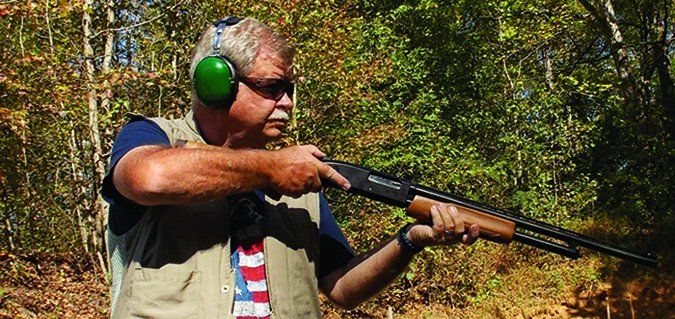
The shotgun can be an important part of the home-defense firearms collection. The scattergun offers excellent hit probability and provides a formidable option for those concerned with home invasions. The wisdom of such preparedness is reflected in the headlines every day. We live in a dangerous world. The problem is, many of us are on a budget and cannot afford a thousand-dollar tactical shotgun. Others are recoil shy or have a physical impairment that makes firing the mighty 12 gauge difficult. Even some who may be able to handle the 12 well will find the light and fast-handling 20 gauge has appeal.
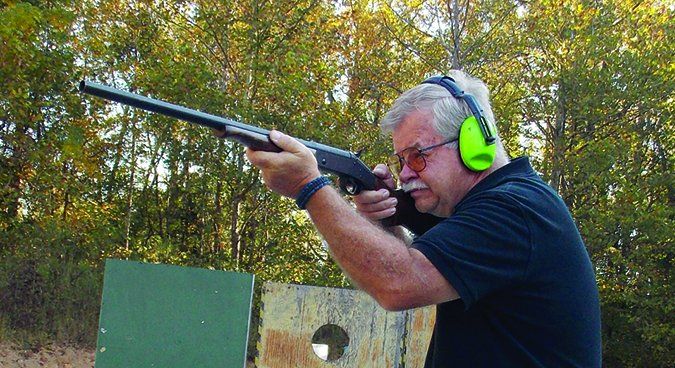
In this installment, we test three affordable 20-gauge shotguns. The 20 gauge was chosen because, while generating about half the recoil of the 12 gauge, it has a little more than half the payload, which considering the ample power of the shotgun, seems to be a reasonable trade off. Even better for the tests, as it turns out the shotguns were choked Open, Modified and Full, giving us a unique opportunity to compare chokes and how they affect shot spread at home-defense ranges. After weeks of searching, we found three shotguns at or under $300. These included the Century International Arms JW-2000 double-barrel coach gun, a Mossberg 20-gauge pump, and an H&R Pardner single shot. Some may scoff at the idea of even considering the single shot or double barrel for home defense, but we found that while they might not be ribeye, they aren’t chopped liver if used properly.
Harrington & Richardson Pardner Compact SB1-250 20 Gauge, $187
GUN TESTS GRADE: C

The H&R Pardner required much discussion when rating the firearms. However, we do not wish to rely upon a single shot for home defense if we can possibly afford something else. But its grade doesn’t reflect on its performance: The Pardner is safe to maintain loaded in the home, handles quickly, is light, has much utility in the sporting field for game, and offers a traditional appearance. You can often find these used for around $75, and we wouldn’t hesitate to buy one near that price.
| ACTION TYPE | Break-action hammer-fired; 3 in. chamber |
| OVERALL LENGTH | 36.5 in. |
| OVERALL HEIGHT | 5.5 in. |
| CAPACITY | 1 |
| WEIGHT UNLOADED | 5.2 lbs. |
| WEIGHT LOADED | 5.3 lbs. |
| BARREL | 22 in., blued steel |
| CHOKE | Modified |
| BUTTSTOCK | American hardwood, walnut finish |
| BUTTSTOCK LENGTH OF PULL | 12.5 in. |
| BUTTSTOCK DROP AT COMB | 1.5 in. |
| BUTTSTOCK DROP AT HEEL | 2 in. |
| FOREARM | American hardwood, walnut finish |
| SIGHTS | Bead front |
| TRIGGER PULL WEIGHT | 4.2 lbs. |
| WARRANTY | 2 year limited |
| TELEPHONE | (866) 776-9292 |
| WEBSITE | hr1871.com |
| MADE IN | USA |
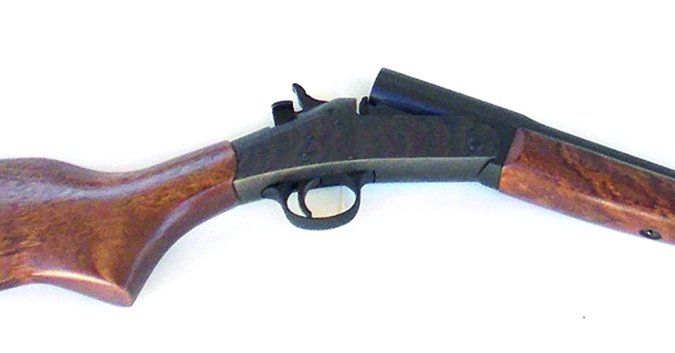
This was the gun’s price at BudsGunShop.com, but we found one used at SCGunCo.comfor only $75. The Pardner was a friendly shotgun with a good feel. It was the lightest shotgun tested at just over 5 pounds. Overall length was also the least, due to the compact action. The used shotgun we saw showed finish wear, but was in good condition overall, and we would have bought it for that price. The H&R features a transfer bar system. This means that it is safe to leave the chamber loaded and the hammer down without worrying about dropping the gun and setting it off. All shotguns and rifles manufactured by H&R 1871, LLC have a built-in “transfer bar” type mechanism. When the hammer is in the fully forward (uncocked) position and the trigger is fully forward, there is no contact between the hammer and the firing pin. When the hammer is manually pulled back fully into the cocked position, the transfer bar moves upward to form a bridge between the hammer and the firing pin. When the hammer is in the cocked position and the trigger is pulled and held, the hammer falls, striking the transfer bar, transferring the hammer blow to the firing pin.
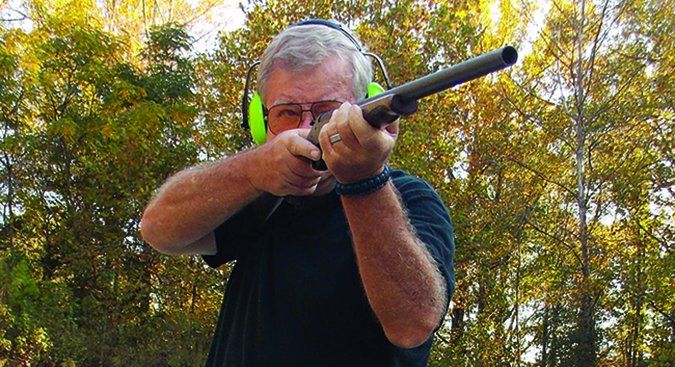
As soon as the trigger is released, the transfer bar is pulled down, creating a void between the hammer and the firing pin. To load, press the loading lever beside the hammer, tilt the barrel down, load the chamber, and then close the action. To fire, cock the hammer and press the trigger. This action is ideal for beginning shooters and to coach youths interested in shooting. As a minimal defense shotgun, the major drawback is the shotgun’s capacity. One shell is cutting it close in personal defense. Just the same, the H&R features an automatic ejector and is remarkably quick to reload for those willing to practice. Break the action open and the spent shell is sent flying over the shoulder as you reload. The best program is to make the shot you have count. And the shot you have with #3 Buckshot is far more effective than any handgun round is likely to be at close quarters.
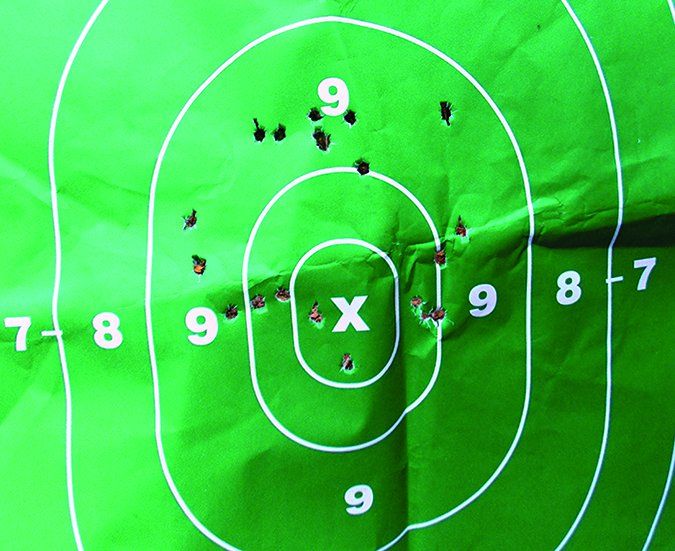
The Pardner exhibited the most recoil of the shotguns tested, and this is due to its light weight. This wasn’t a problem with the 20 gauge. Initial firing was accomplished with a good supply of Winchester birdshot, and 7⁄8 ounces of #8 shot isn’t a hard kicker. The Pardner gave good patterns and would serve as a rabbit gun or even a quail getter for a good wingshot. So, the single-shot shotgun has some utility as a go-anywhere, do-anything truck or camper gun. We have previously confirmed that Winchester #3 buckshot will penetrate 24 inches of water jugs. The shot is much smaller than the #00 buckshot used in the 12 gauge, but the concentration of shot should provide excellent results at close range. No. 3 is .25 caliber, where No. 4 is .32 caliber. The 20-gauge buckshot was not difficult to manage. The Modified choke of the Pardner gave a good pattern. We also tried a quantity of the Hornady FTX slugs, which is recommended for rifled barrels. With a 250-grain slug traveling at more than 1500 fps, this is getting into 454 Casull territory, yet was not difficult to fire at all. The slug struck just above the point of aim at 10 yards. In a pinch, that slug could come in handy.
Our Team Said: In the end, the Pardner is a friendly gun and certainly worth its modest price. We knew what we were getting in this single shot, and the Pardner gave a good value. The quality was better than the Chinese-made double barrel and was comparable to the Mossberg.
Century International Arms Coach Shotgun JW-2000 20 Gauge, $300
GUN TESTS GRADE: C

This shotgun is the heaviest tested, and as might be expected, generated the least felt recoil. This is a fun gun, a double barrel with hammers that harkens to the Old West. However, as one rater pointed out, this type was also a popular firearm among partisans during World War II. The piece is fast on target and offers a steady firing platform. The safety of having to cock the hammer for each shot has some appeal, as does the option of leaving the shotgun open but ready for action. While it is a good option for homeowners, we think the Mossberg is more versatile.
| ACTION TYPE | Break action side-by-side; 3 in. chambers, rabbit ear hammers |
| OVERALL LENGTH | 37.5 in. |
| OVERALL HEIGHT | 5.75 in. |
| CAPACITY | 2 |
| WEIGHT UNLOADED | 7.9 lbs. |
| WEIGHT LOADED | 8 lbs. |
| BARREL | 20 in., blued steel |
| CHOKE | None |
| BUTTSTOCK | Hardwood, rubber buttpad |
| BUTTSTOCK LENGTH OF PULL (FRONT) | 14.75 in. |
| BUTTSTOCK LENGTH OF PULL (REAR) | 13.75 in. |
| FOREARM | Hardwood, walnut stained |
| SIGHTS | Brass bead front |
| TRIGGER PULL WEIGHT (RIGHT BARREL) | 7.25 lbs. |
| TRIGGER PULL WEIGHT (LEFT BARREL) | 5 lbs. |
| WARRANTY | 1 year |
| TELEPHONE | (800) 527-1252 |
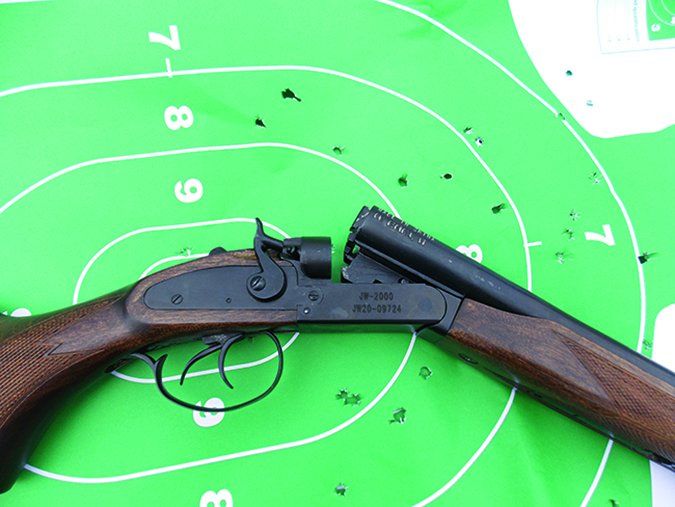
This was the retail counter price at SCGunCo.com. The Coach Gun offers a classic appearance with dual hammers and dual triggers. From the start, we felt that this wasn’t the most practical home-defense shotgun, but perhaps someone who prefers traditional shotguns or Cowboy Action shooting would prefer the coach gun. As the test progressed, we began to see that the type has much merit for home defense.
First, the shotgun may be kept loaded and ready. The rebounding hammers of the JW-2000 make the closed and loaded shotgun safe. The hammers cannot touch the firing pins when the hammers are at rest, a good redesign over older rabbit-ear shotguns. Even better, you can leave the action open and instantly close it if needed. The hammers are not difficult to cock for firing. The trigger action is smooth enough, with the right hammer more difficult than the left to press. Each shotgun barrel is bored Open choke. This provided the widest pattern of any of the shotguns at 10 yards, as expected. The pattern was nicely centered on the target with either barrel out to a long 15 yards. This would be the limit for this shotgun with buckshot. The semi-rib and bead center aiming point was well done, we felt, and allowed a good aim. It is nice that the loads each were centered, at least to the distance we tested the shotgun. The wide pattern, we feel, is an advantage in home defense. You are more likely to make a hit with the 20 #3 buckshot pellets than a single handgun round, even though at close range, 5 yards or so, the shotgun must be aimed as surely as a rifle to center the pattern.
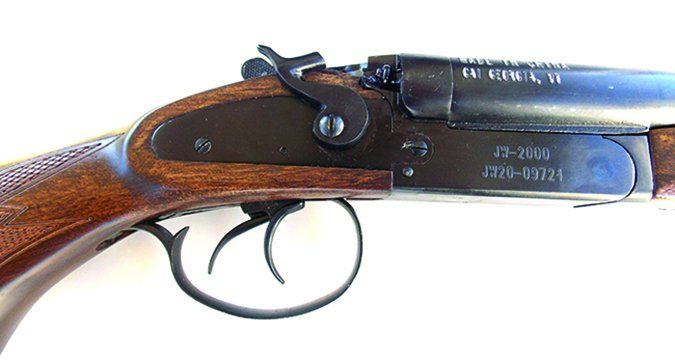
Fired with birdshot, the Coach Gun was fun to shoot. However, it was the heaviest shotgun tested. While this dampened recoil, it also made the Coach Gun slower to swing between targets. This weight makes the Coach Gun the least likely of the three shotguns to be used in the field. While there is some utility for rabbits or squirrels, perhaps this is the least versatile of the shotguns tested based on weight and the fixed choke. Cocking that hammer for a shot and then swinging an 8-pound shotgun might result in a lot of bunnies hopping away. That’s okay, because as a home-defense shotgun, it has merit. We fired the Coach Gun by cocking each hammer in turn to fire, or by cocking both hammers and then firing one barrel at a time. Either worked. You can fire each barrel manually in about a half second in any case with a fast double. The Coach Gun also features a safety that locks the triggers when applied.
A myth exists that modern coach guns have an interrupt and cannot fire both barrels at once. We donned gloves and pulled both triggers at once. However, due to the different trigger-pull weights of the trigger action and perhaps because we have not done this before, it took three tries to get it right. Recoil was not that bad, and the effect on target of 40 #3 buck pellets was impressive. Just the same, perhaps it is best to fire the piece one shell at a time. There is a good chance of bruising or even cutting the knuckles with the release of both barrels, and it is really a stunt. Please don’t try it yourself.
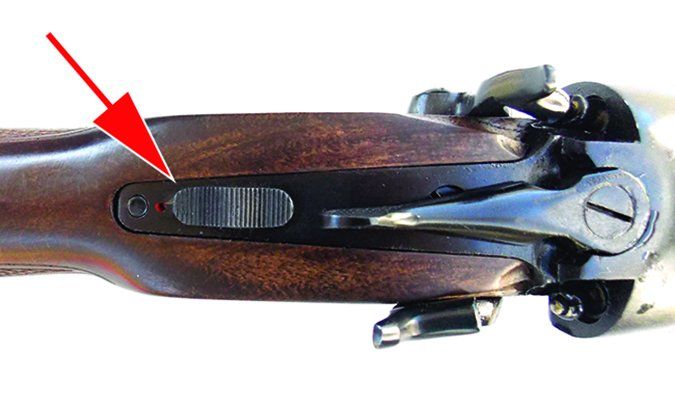
Fired with buckshot, recoil just wasn’t there using the Coach Gun. The recoil pad was a good touch, but this shotgun might have served without the rubber on the end of the stock. We pretty much ignored the safety during the test. Just the same we feel it is a good option. When moving with the hammers cocked, the safety should be on. It is easily pressed forward to fire. Initially, it was quite stiff to make it on Safe, but the switch loosened up with use. Likewise, the action of the shotgun was stiff at first. During early firing, in fact, it was so stiff our female rater could not open the action. It became stiffer after the first firing, but eventually loosened up.
The JW-2000 also showed a lot of tool marks. While the overall fit and finish were okay, the tool marks simply were a product of the shotgun’s low price. Still, they were very noticeable.
Our Team Said: There are advantages to the Coach Gun. Among these was the lightest recoil of any of the shotguns. An 8-pound 20-gauge shotgun simply doesn’t kick much. However, this weight makes it less inviting to carry and use on the range. Also, with both the Coach Gun and the Pardner, the exposed hammers tended to snag when used as a truck gun or kept at ready in the closet. In the end, the double-barrel Coach Gun is simple to use, handy, comfortable to fire, and throws a powerful charge. But we like the pump-action Mossberg better.
Mossberg 505 Youth Pump-Action Shotgun 57110 20 Gauge, $300
GUN TESTS GRADE: A (Best Buy)

The Mossberg 505 Youth is an overlooked gem. Another version of the shotgun has an adjustable synthetic stock with inserts at $406, but we liked the wood stock supplied with our shotgun. The fit wasn’t bad for most raters, and the pump action with the EZ Reach forearm is very fast. The rib, dual beads, and choke tubes were pluses. When capacity, reliability, and versatility are considered, the Mossberg is a winner.
| ACTION TYPE | Pump, dual extractors, twin action bars |
| CHAMBER SIZE | 3 in. |
| OVERALL LENGTH | 37.5 in. |
| CAPACITY | 5 |
| WEIGHT UNLOADED | 5.25 lbs. |
| BARREL LENGTH | 20 in. |
| BARREL | Blued steel |
| RECEIVER | Drilled and tapped |
| CHOKE | Accu-Set (F, Mod, Cyl.) |
| BUTTSTOCK | Checkered hardwood, vented recoil pad |
| BUTTSTOCK LENGTH OF PULL | 12 in. |
| FOREARM | EZ Reach checkered hardwood |
| SIGHTS | Dual bead |
| TRIGGER PULL WEIGHT | 6 lbs. |
| WARRANTY | None |
| TELEPHONE | (800) 363-3555 |
| WEBSITE | Mossberg.com |
| MADE IN | USA |
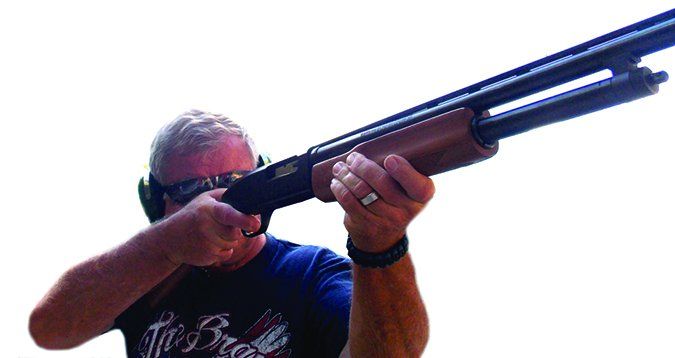
MSRP for this model is $406. The price above was for a recent listing on a new 505 Youth pumpgun at GunBroker.com. We found an earlier version of the 505, the 500C, in the used rack at SCGunCo.com for $260.
The Youth is a scaled-down Mossberg 500 with features intended to give short-statured shooters a good fit when handling the shotgun, such as the stock being a bit shorter than on a full-size shotgun. The best feature was the EZ Reach forend. This forend sits closer to the shooter than on most pumpguns. It actually took some acclimation to get used to. Shooters who have used standard shotguns for years had to adjust to the forend and the short stroke of this 20-gauge shotgun. After settling in, however, we found the action was short, fast, and very smooth.
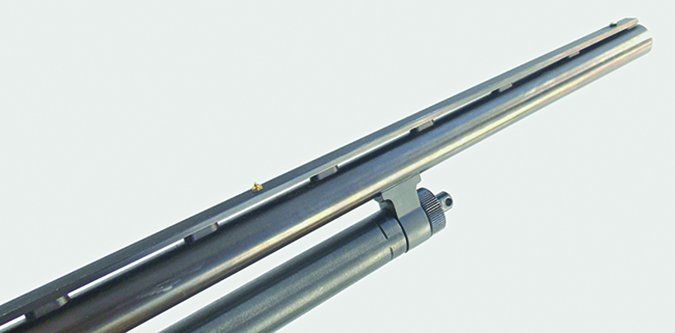
Elsewhere, the Youth had the standard features of other Model 500 pumps, including dual action bars and dual extractors. The 20-gauge version we purchased also featured a rib with dual sighting beads, a nice touch for the money. This shotgun is a repeater, unlike the others, a term not used often today, but an ideal description for this shoot out. The Mossberg magazine held five 2.75-inch shells. That is a great advantage over the H&R Pardner’s single shot and the two shots of the Coach Gun. If facing a takeover robbery or a team, this offers enough ammunition to possibly end the fight. Also, the Mossberg wasn’t as heavy as the Coach Gun and handled more quickly. It isn’t quite as fast to the shoulder as the Pardner, but it kicks less.
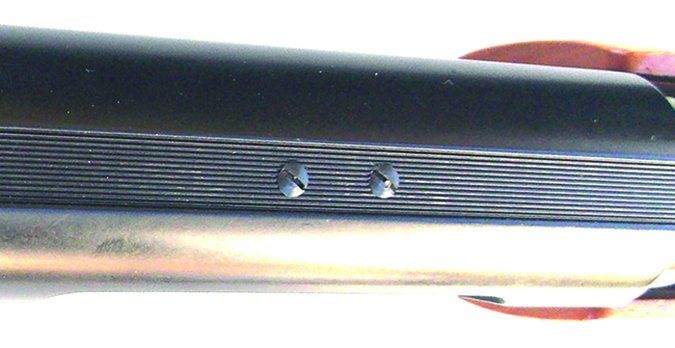
One thing we did notice when firing the Mossberg, we had to let the trigger positively reset. You cannot ride the face of the trigger; there is a solid reset with this shotgun. Nonetheless, get the rhythm correct, pump the action with its short stroke, and this is a very fast shotgun.
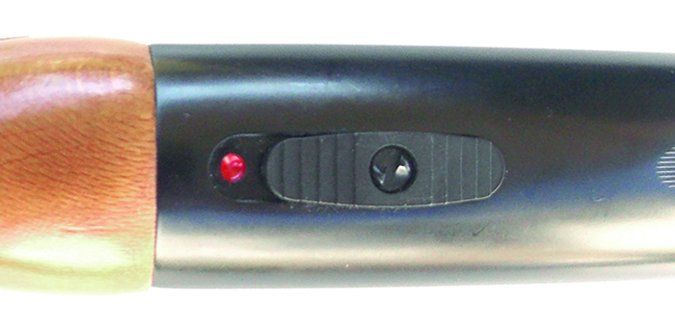
While we are primarily concerned with personal defense, the Mossberg pump would be a fine field gun for small-game hunting. The Mossberg accepts the Accu-Set (F, Mod., Cyl.) choke tubes, but for our purposes, we used the Full choke to get an idea of how it compared to the Cylinder and Modified chokes on the others. After working the shotgun in with birdshot and getting used to the action, we found the Winchester #3 buckshot’s pattern was nicely centered, and we had good control of shotgun. It was not difficult to sling out five shells in record time. More important, the second shot was very fast. The Hornady slug struck about 4 inches below the point of aim at 20 yards.
Our Team Said: The Mossberg 20 gauge is a great all-round pump shotgun for the price, and we think it’s a Best Buy for the shooter who’s looking for a lightweight, shareable shotgun for home defense.
Written and photographed by R.K. Campbell, using evaluations from Gun Tests team testers.

























